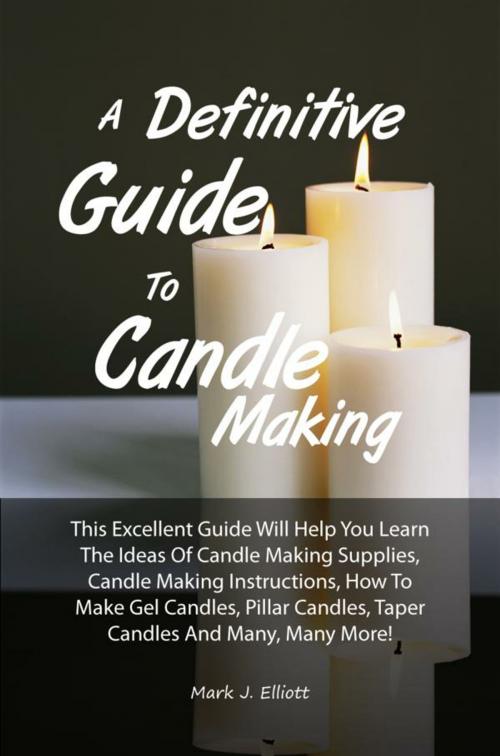A Definitive Guide To Candle Making
This Excellent Guide Will Help You Learn The Ideas Of Candle Making Supplies, Candle Making Instructions, How To Make Gel Candles, Pillar Candles, Taper Candles And Many, Many More!
Nonfiction, Home & Garden, Crafts & Hobbies| Author: | Mark J. Elliott | ISBN: | 1230000017296 |
| Publisher: | KMS Publishing | Publication: | September 12, 2012 |
| Imprint: | Language: | English |
| Author: | Mark J. Elliott |
| ISBN: | 1230000017296 |
| Publisher: | KMS Publishing |
| Publication: | September 12, 2012 |
| Imprint: | |
| Language: | English |
The art of making candles has been around since primitive times. Of course, as time went by they become much different in design than what they were back then. In the early days, candles were a necessity for heat and light. Today they serve as decorations, wonderfully smelling mechanisms in our homes, and offer light for romantic dinners and baths.
The first known use of candles is not completely known. The remains of clay candle holders that date back to 4 BC have given us the knowledge that they have been in use for a very long time. Those clay candle holders were found in Egypt.
Candles were also used in ancient times in both China and Japan. These candles were made of wax extracted from insects and seeds. The taper candles of India were made from the wax extracted from boiled cinnamon. Candles are not known to exist in American until 1 AD. It is believed Native American’s burned oily fish and the back of the Cerio tree. When settlers came to New England, they used similar techniques to extract wax from bayberries. Many modern candle makers still use that process to make bayberry candles. However, it is quite expensive to do so.
Tallow was the product used to make candles in the 1600’s and 1700’s. This is a byproduct from animal fat. The product worked well but had a foul odor, especially when it was burning. Bees wax and paraffin wax both were introduced in the early 1800’s, and tallow stopped being used.
The art of making candles has been around since primitive times. Of course, as time went by they become much different in design than what they were back then. In the early days, candles were a necessity for heat and light. Today they serve as decorations, wonderfully smelling mechanisms in our homes, and offer light for romantic dinners and baths.
The first known use of candles is not completely known. The remains of clay candle holders that date back to 4 BC have given us the knowledge that they have been in use for a very long time. Those clay candle holders were found in Egypt.
Candles were also used in ancient times in both China and Japan. These candles were made of wax extracted from insects and seeds. The taper candles of India were made from the wax extracted from boiled cinnamon. Candles are not known to exist in American until 1 AD. It is believed Native American’s burned oily fish and the back of the Cerio tree. When settlers came to New England, they used similar techniques to extract wax from bayberries. Many modern candle makers still use that process to make bayberry candles. However, it is quite expensive to do so.
Tallow was the product used to make candles in the 1600’s and 1700’s. This is a byproduct from animal fat. The product worked well but had a foul odor, especially when it was burning. Bees wax and paraffin wax both were introduced in the early 1800’s, and tallow stopped being used.















